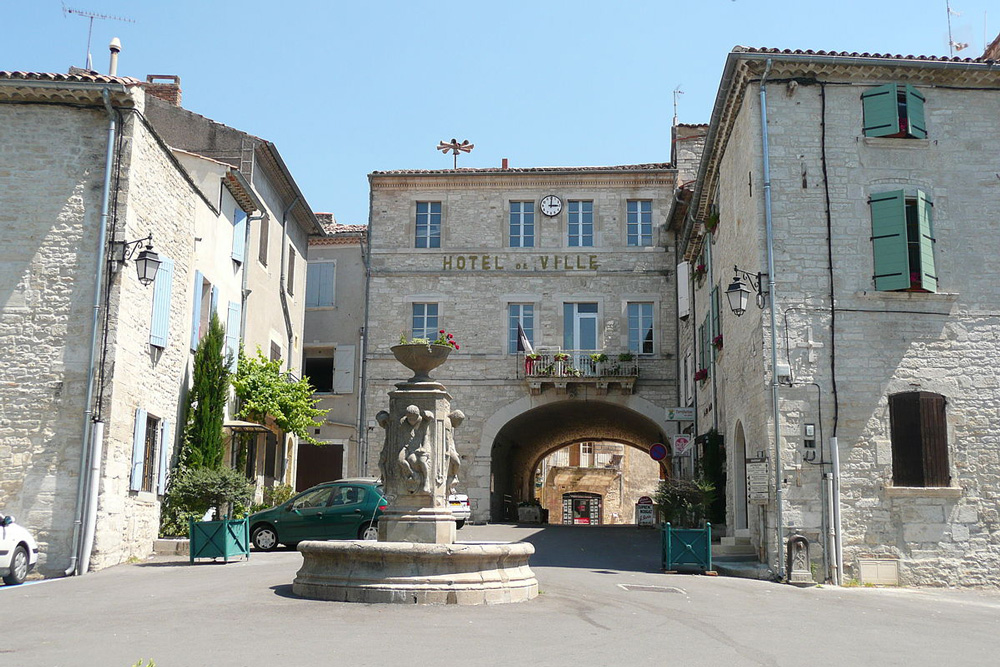
Between the gorges of the Ardèche and those of the Cèze, the last stop of Louis XIII on the road to the Peace of Alès, alternately Protestant and Catholic, Barjac is a city with a very rich historical past as well as its heritage.
Barjac is first of all symbolized by its castle, dating from the beginning of the 17th century and today restored. It houses the town hall, a cinema, a library, activity rooms, exhibitions and is also a venue for shows.
A circuit allows you to discover the "Renaissance Tower", the Lower Gate, the Capuchin Chapel, the private mansions and their towers, the market place and its plane trees, the Upper Gate and the Grand'Rue, the Saint-Laurent church, the esplanade and the fountain, the market hall...
The Renaissance Tower, located on the former main square of the city, this slender and rather narrow corner tower was probably built during the 16th century and is a real architectural gem.
Also worth seeing is the Porche de Vergeyras, the former access porch of the Vergeyras house built in the 16th century, whose interior courtyard contains gargoyles, the chapel of the Capuchin Convent, which has now become the "Clos des Capucins" restaurant, whose kitchen has retained its well. On the second floor, there are monastic cells. In the park, the disused chapel has a classical facade with a bell tower, pediment and niche occupied by a statue.
You should also see the Saint-Laurent church, built between 1672 and 1692 to replace the Saint-Laurent de Maillac church which had become too dilapidated, as well as the Merle de Lagorce mansion, of which only the main access door remains visible, and the Dufour mansion, a 16th century tower giving access to the different floors of the mansion and located on the rue de Salavas, which is one of the eight towers presently listed in the old town of Barjac.
Barjac is also very rich in prehistoric vestiges. Fifteen dolmens have been counted in the surroundings and can be dated, if we stick to the simplicity of their architecture, to the Bronze Age, that is to say the 2nd millennium before Jesus-Christ.
Barjac is also home to many artists such as the world-renowned painter Anselm Kiefer.
Every year, in summer, art exhibitions are presented in the rooms of the castle of Barjac.
The Festival " Barjac m'en chante " is a festival of songs proposed every year at the end of July.
Finally, the fairs of Barjac have always played a great role in the life of the city. Their origin goes back to the royal orders of François 1st and Louis XIV. At Easter, Barjac welcomes its Antiques and Brocante Fair, on July 14th its Lavender Fair and the last Sunday of July its Organic Fair.
Around Barjac...
Not far from Barjac, you can visit three of the most beautiful villages of France, Aiguèze, Montclus and La Roque sur Cèze with the waterfalls of Sautadet. Still in the Cèze valley, there is also Goudargues, the little Venice of the Gard, and further on in the Ardèche gorges, Vallon-Pont d'Arc and its prehistoric wonders.
Town hall of Barjac
30430 Barjac
Tel : 04 66 24 50 09
Barjac Tourist Office
Place Charles Guynet,
BP15
30430 Barjac
Tel : 04 66 24 53 44
http://www.tourisme-barjac.com/
Translated with www.DeepL.com/Translator
(free version)



